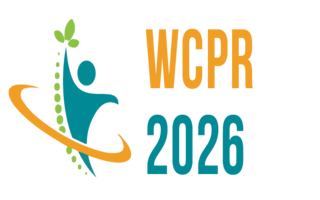3rd World Congress on
Physical Medicine and Rehabilitation
March 26-27, 2026 | Osaka, Japan

Address: 1 Chome-9-15 Shinkitano, Yodogawa Ward, Osaka, 532-0025, Japan.
WCPR 2026

King Mongkut’s Institute of Technology Ladkrabang, Thailand
Abstract:
Postoperative rehabilitation after shoulder surgery is essential, but access to in-person physiotherapy is often limited by cost, geography, and resources. Tele-rehabilitation has emerged as a potential alternative, but its comparative effectiveness, patient satisfaction, and cost-effectiveness remain uncertain. We systematically reviewed and synthesized evidence comparing tele-rehabilitation with
in-person rehabilitation following shoulder surgery, focusing on functional, pain, satisfaction, and economic outcomes. This review was conducted under a registered PROSPERO protocol (CRD420251133175) in line with PRISMA 2020 guidelines. Eligible studies included randomized controlled trials (RCTs) and controlled cohort studies comparing tele-rehabilitation with in-person rehabilitation. Two reviewers independently screened and extracted data, with a third resolving discrepancies. Risk of bias was assessed using Cochrane RoB2 and ROBINS-I, and certainty of evidence was graded using GRADE. Five studies (four RCTs, one prospective cohort; N=315) were included.
Functional outcomes were generally comparable, though one large RCT (n=115) showed significantly greater improvements in shoulder function and quality of life with an augmented-reality tele-rehabilitation system. Pain improvements were similar across groups. Patient satisfaction varied: one cohort (n=132) reported high acceptance (93% would recommend), while a small RCT was terminated due to attrition and crossover. Cost analysis (n=18) suggested 22–30% lower rehabilitation costs with tele-rehabilitation. No adverse events were reported. Risk of bias ranged from low to high, and certainty of evidence was moderate for pain, shoulder ROM, function, and cost-effectiveness, but low for satisfaction, adherence, quality of life, and adverse events. Tele-rehabilitation appears safe, effective, and cost-saving, but further high-quality RCTs are needed
Biography:
Bavornpol Phuttasuatta is a medical student at King Mongkut’s Institute of Technology Ladkrabang (KMITL), Faculty of Medicine. He has a strong academic and research interest in the field of Physical Medicine and Rehabilitation, with particular focus on musculoskeletal rehabilitation, tele-rehabilitation, and innovations in patient-centered care. He has participated in research and academic activities at KMITL, including systematic reviews and collaborative projects related to rehabilitation medicine. His long-term goal is to contribute to advancing rehabilitation science and improving access to effective, evidence-based therapies
